Nissan Qashqai vs Peugeot 308 - Differences and prices compared
Costs and Efficiency:
Looking at overall running costs, both models reveal some interesting differences in everyday economy.
Peugeot 308 has a barely noticeable advantage in terms of price – it starts at 29200 £, while the Nissan Qashqai costs 29600 £. That’s a price difference of around 368 £.
Fuel consumption also shows a difference: Peugeot 308 manages with 2.30 L and is therefore convincingly more efficient than the Nissan Qashqai with 4.50 L. The difference is about 2.20 L per 100 km.
Engine and Performance:
Power, torque and acceleration are the classic benchmarks for car enthusiasts – and here, some clear differences start to show.
When it comes to engine power, the Nissan Qashqai has a barely noticeable edge – offering 205 HP compared to 195 HP. That’s roughly 10 HP more horsepower.
In acceleration from 0 to 100 km/h, the is quicker – completing the sprint in , while the takes . That’s about faster.
In terms of top speed, the Peugeot 308 performs minimal better – reaching 225 km/h, while the Nissan Qashqai tops out at 206 km/h. The difference is around 19 km/h.
There’s also a difference in torque: Nissan Qashqai pulls minimal stronger with 330 Nm compared to 300 Nm. That’s about 30 Nm difference.
Space and Everyday Use:
Whether family car or daily driver – which one offers more room, flexibility and comfort?
Seats: offers more seating capacity – vs .
In curb weight, Nissan Qashqai is minimal lighter – 1420 kg compared to 1453 kg. The difference is around 33 kg.
In terms of boot space, the Nissan Qashqai offers somewhat more room – 504 L compared to 412 L. That’s a difference of about 92 L.
In maximum load capacity, the Nissan Qashqai performs minimal better – up to 1447 L, which is about 124 L more than the Peugeot 308.
When it comes to payload, Nissan Qashqai slight takes the win – 520 kg compared to 503 kg. That’s a difference of about 17 kg.
Who wins the race?
The Peugeot 308 proves to be dominates this comparison and therefore becomes our DriveDuel Champion!
Peugeot 308 is the better all-rounder in this comparison.
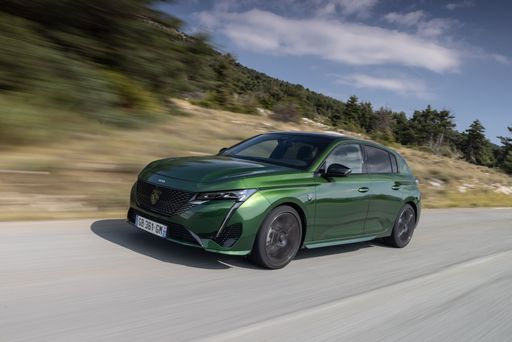 @ Peugeot / Stellantis Media
@ Peugeot / Stellantis Media
Peugeot 308
Costs and Consumption
View detailed analysis
Engine and Performance
View detailed analysis
Dimensions and Body
View detailed analysis
Nissan Qashqai
The Nissan Qashqai blends practical, family-friendly packaging with SUV styling that refuses to shout, making it a sensible and dependable choice for everyday life. It’s comfortable to live with, economical on the road, and neatly equipped enough to feel modern without ever feeling precious — perfect if you want crossover versatility without the drama.
details @ Nissan Motor Corporation
@ Nissan Motor Corporation
 @ Nissan Motor Corporation
@ Nissan Motor Corporation
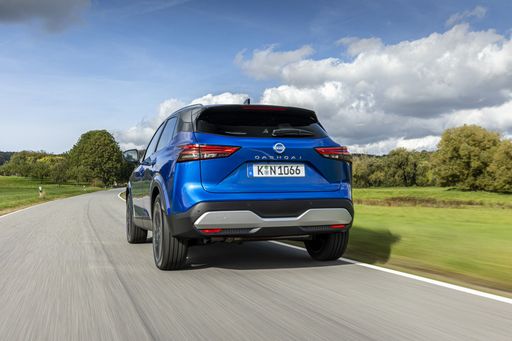 @ Nissan Motor Corporation
@ Nissan Motor Corporation
 @ Nissan Motor Corporation
@ Nissan Motor Corporation
 @ Nissan Motor Corporation
@ Nissan Motor Corporation
Peugeot 308
The Peugeot 308 brings a sleek, feline profile and an unexpectedly upscale cabin, with clever packaging and materials that feel a touch more premium than you might expect. It’s composed on the road, easy to live with for daily life, and a smart choice if you want a stylish hatch that still behaves when the road gets interesting.
details @ Peugeot / Stellantis Media
@ Peugeot / Stellantis Media
 @ Peugeot / Stellantis Media
@ Peugeot / Stellantis Media
 @ Peugeot / Stellantis Media
@ Peugeot / Stellantis Media
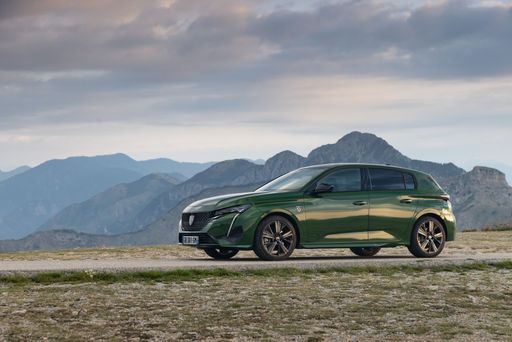 @ Peugeot / Stellantis Media
@ Peugeot / Stellantis Media
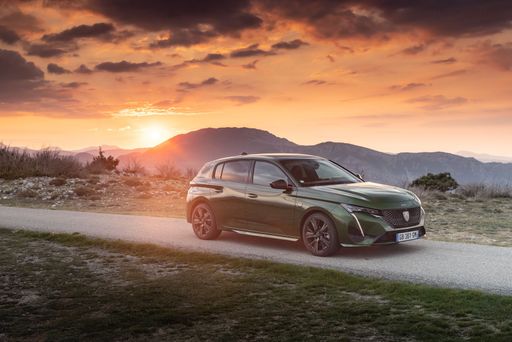 @ Peugeot / Stellantis Media
@ Peugeot / Stellantis Media
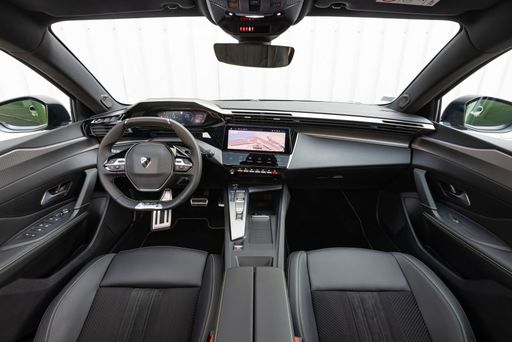 @ Peugeot / Stellantis Media
@ Peugeot / Stellantis Media
 @ Nissan Motor Corporation
@ Nissan Motor Corporation
|
 @ Peugeot / Stellantis Media
@ Peugeot / Stellantis Media
|
|
|
|
Costs and Consumption |
|
|---|---|
|
Price
29600 - 39900 £
|
Price
29200 - 42600 £
|
|
Consumption L/100km
4.5 - 6.8 L
|
Consumption L/100km
2.3 - 5 L
|
|
Consumption kWh/100km
-
|
Consumption kWh/100km
15.60 kWh
|
|
Electric Range
-
|
Electric Range
78 - 450 km
|
|
Battery Capacity
-
|
Battery Capacity
0.40 kWh
|
|
co2
102 - 154 g/km
|
co2
0 - 129 g/km
|
|
Fuel tank capacity
55 L
|
Fuel tank capacity
42 - 52 L
|
Dimensions and Body |
|
|---|---|
|
Body Type
SUV
|
Body Type
Hatchback
|
|
Seats
5
|
Seats
5
|
|
Doors
5
|
Doors
5
|
|
Curb weight
1420 - 1665 kg
|
Curb weight
1453 - 1749 kg
|
|
Trunk capacity
479 - 504 L
|
Trunk capacity
314 - 412 L
|
|
Length
4425 mm
|
Length
4367 mm
|
|
Width
1835 mm
|
Width
1852 mm
|
|
Height
1625 mm
|
Height
1438 mm
|
|
Max trunk capacity
1422 - 1447 L
|
Max trunk capacity
1258 - 1323 L
|
|
Payload
466 - 520 kg
|
Payload
430 - 503 kg
|
Engine and Performance |
|
|---|---|
|
Engine Type
Petrol MHEV, Full Hybrid
|
Engine Type
Petrol MHEV, Diesel, Plugin Hybrid, Electric
|
|
Transmission
Manuel, Automatic
|
Transmission
Automatic
|
|
Transmission Detail
Manual Gearbox, CVT, Reduction Gearbox
|
Transmission Detail
Dual-Clutch Automatic, Automatic Gearbox, Reduction Gearbox
|
|
Drive Type
Front-Wheel Drive, All-Wheel Drive
|
Drive Type
Front-Wheel Drive
|
|
Power HP
140 - 205 HP
|
Power HP
131 - 195 HP
|
|
Acceleration 0-100km/h
7.6 - 10.2 s
|
Acceleration 0-100km/h
7.6 - 10.6 s
|
|
Max Speed
170 - 206 km/h
|
Max Speed
170 - 225 km/h
|
|
Torque
240 - 330 Nm
|
Torque
230 - 300 Nm
|
|
Number of Cylinders
3 - 4
|
Number of Cylinders
3 - 4
|
|
Power kW
103 - 151 kW
|
Power kW
96 - 144 kW
|
|
Engine capacity
1332 - 1498 cm3
|
Engine capacity
1199 - 1598 cm3
|
General |
|
|---|---|
|
Model Year
2025
|
Model Year
2025
|
|
CO2 Efficiency Class
E, C
|
CO2 Efficiency Class
C, D, B, A
|
|
Brand
Nissan
|
Brand
Peugeot
|
Is the Nissan Qashqai offered with different drivetrains?
Available configurations include Front-Wheel Drive or All-Wheel Drive.
The prices and data displayed are estimates based on German list prices and may vary by country. This information is not legally binding.
